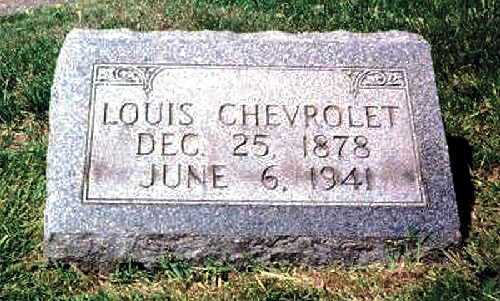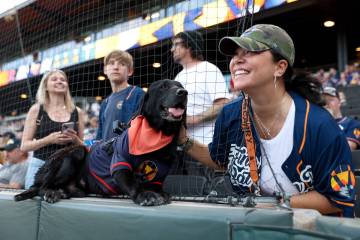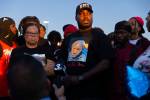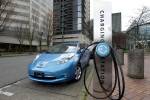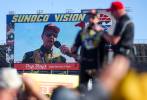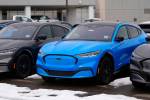Talented Louis Joseph Chevrolet became victim of big-business politics
How many drivers have taken their Suburbans, Corvettes or Malibus over the intersection of Highway 40 and Interstate 70 and never thought twice about it?
How many have taken the East Washington Street exit, turned left on Oriental Street, passed over Market Street and stopped at Holy Cross and Saint Joseph Cemetery in the heart of this Midwest state capital to honk a horn in honor of the most famous automobile name no one knew?
How many would even know Louis Joseph Chevrolet was even buried here?
But he is. The cement marker that sits crumbling at the sides says so. It says the man who was born on Christmas Day in 1878, and died 62 years and 157 days later, rests in peace, if only because anonymity is a lonely place.
Long neglected in his Swiss home town, long forgotten in America, Chevrolet was always one to chart his own path.
Rough, blustery, uneducated and unabashedly brazen, he wasn't a man who would have wanted a monument much larger than a nondescript slab of granite, anyway. He wasn't one to rub elbows with the establishment. He never found a way to cash in from his talents. He never cared.
That his name lives on to this day probably has more to do with romanticism than the man who was actually behind that name.
Born the son of a watchmaker in the Jura mountains of Switzerland, the center of the French dairy industry, the very name is thought to be a french corruption of "goat's milk." The man himself would stand for other things.
Large and 6-feet tall, Chevrolet actually began a career in bicycle repair after his family moved to Beaune, France. Soon after, the younger Chevrolet was racing bikes on a regular basis, winning 28 competitive events in three years while building and rebuilding whatever he could.
How he got to America from there is a bit of a legend.
As the story goes, Chevrolet was discovered by a member of the Vanderbilt family when the U.S. tycoon's car broke down in front of the bicycle shop in the spring of 1896. The owner of the shop was unable to start the engine, but Louis, who was filing a cogged wheel in the back of the shop, stepped forward to help out the man.
Vanderbilt, stunned at the moxie of the 18-year-old boy, told Chevrolet: "Come to America. There's work for you there. When you come, look me up."
Whether Chevrolet found Vanderbilt again, no one is quite sure, but within two years, he was staring at a Montreal skyline as his ocean liner pulled into the Canadian port.
For six months Chevrolet would work as a driver-mechanic in the French city, chauffeuring people around, learning English and racing. Eventually, he would continue his racing career driving for W.C. Durant, the father of General Motors. Chevrolet won his first road race on a cinder track in Morris Park, N.Y., in 1905, then won at the brand-new Indianapolis Motor Speedway in the fifth Indy car "event," a 395-mile race that would be the first of his 27 major event victories. Six years later, he even convinced Durant to let him drive a Buick in the first Indianapolis 500.
Meanwhile, with more automotive experience under his belt, Chevrolet moved to Flint, Mich., and began designing his own engines and working with Durant. Teamed together, they began the Chevrolet Motor Car Co. of Michigan. Durant admired Chevrolet's mechanical wisdom and asked him to build a car that would compete with the Model T.
By 1912, Chevrolet had produced the Classic Six, a big, powerful and pricey ride that sold for $2,150, an outrageous sum of money at the time. And that was the problem. With 275 other automakers in the country, Durant realized he needed more volume and a lower price to compete. But Chevrolet wanted his name on a big impressive car.
A year after the Classic Six was rolled out, a disgruntled Chevrolet quit. By October 1913, he sold his stock and securities and left. Durant wouldn't miss a beat. He disliked Chevrolet's brashness but loved his name. The next year he brought the Chevrolet name back into General Motors and soon the badge landed on nearly every car.
Louis would slowly slip away. He became an engineer for a new company called American Motors, but once production was under way he was deemed expendable. He would design a car that his brother, Gaston, would use to win the 1920 Indy 500 and then designed another engine that would take the victory the next year. But two bankruptcies, a boat-racing career and an aircraft company later, he eventually settled for a job as a minor employee back at the company that still used his name.
Sick and underused, he retired two years later and eventually died in 1941 from complications after surgery to amputate his leg.
He was buried in Indianapolis, appropriately near an intersection as anonymous as his legend. Millions of cars later, they still pass without a nod or a honk.
Steven Reive is a feature writer with Wheelbase Media. He can be reached on the Web at www.wheelbase.ws by using the contact link. Wheelbase supplies automotive news and features to newspapers across North America.



